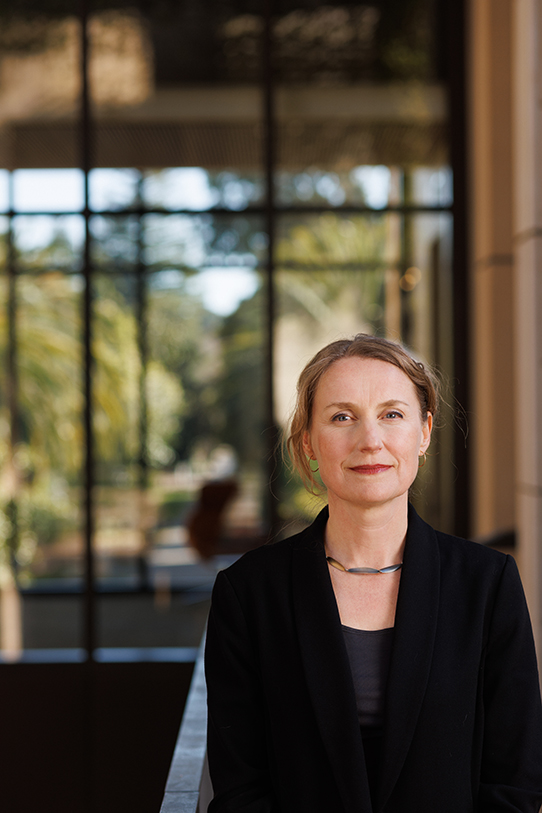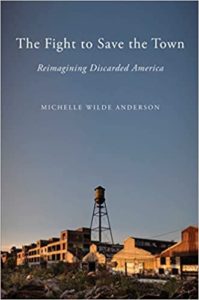The Fight to Save the Town
Professor Michelle Wilde Anderson’s new book explores how local leaders are confronting government collapse in poor communities across the country.

In the wake of the Great Recession, Stanford Law School Professor Michelle Wilde Anderson conducted an empirical study of 28 cities that declared bankruptcy or entered receiverships for municipal insolvency, looking at the depth of their budget cuts to basic local government services that most Americans take for granted.
“When cities face the compound threat of poverty, population loss, and fiscal crisis, what should they do?” she asked in the introduction to the resulting journal article.
Now, Anderson is taking a closer look at how community leaders in different places answered that question. In The Fight to Save the Town: Reimagining Discarded America, Anderson examines four blue-collar communities where local leaders are making progress against some of the seemingly intractable problems of poverty: violence, a breakdown in public services, unlivable wages, and unaffordable housing.
Each of the towns Anderson studied took a unique approach to solving a particular problem. In Stockton, California, community groups are exploring how to address the traumatic effects of gun violence. In Josephine County, Oregon, which has a long history of anti-government sentiment, residents are seeking to increase funding for emergency services by building a grassroots movement in favor of taxation. In Lawrence, Massachusetts, a multi-ethnic coalition is mobilizing to improve workforce development and increase wages; and in Detroit, Michigan, local leaders are working to fight displacement and restore Black home ownership.
Anderson hopes her research will inform the funding decisions of state and local government leaders. Ultimately, she says, trust in government depends on elected officials’ ability to provide what people need to survive and thrive. “I want state leaders to take another look at the good work going on in their most vulnerable cities—to change their presumptions about what is possible,” she says.
Anderson spent several weeks in each community between 2016 and 2020, conducting approximately 250 interviews with residents, including mayors, nonprofit leaders, law enforcement officials, teachers, parents, and business owners. In addition—with the help of several Stanford Law School students—she conducted extensive analyses of state and federal policy and local and regional history, politics, and budgets to understand what each community had experienced in the past and what resources and constraints they had to work with going forward.
The Fight to Save the Town documents the problem of what Anderson calls “citywide poverty”—a condition in which weak, underfunded local governments are unable to find the money for public services, creating a community-wide “poverty trap” that contributes to rising inequality in this country. But Anderson also highlights the efforts of local leaders to confront this problem head-on.

“The humanitarian urgency of poverty in these cities meant that I felt like I didn’t have enough time to write a problem-oriented book,” Anderson explains. “Advocates in the real world don’t have time to talk just about what’s wrong. They have to do something. I’m trying to do what they do: Learn enough about the problem so you can experiment with solutions intelligently.”
An expert in state and local government law, Anderson describes the book as a culmination of sorts.
“I have thought for many years about disinvestment in people and their environment,” Anderson says. “Both of those problems are at the core of other problems, like crime, unemployment, and evictions.”
Berkeley law professor Ian Haney López, who taught Anderson and remains a friend and mentor, says the book “captures something” about her.
“You need humility to go to these different cities that are struggling with an open mind and an open heart,” he says. “Michelle has that openness of spirit, and it’s combined with deep expertise and one of the sharpest analytical minds I’ve ever met.”
Stanford Law Professor Richard Thompson Ford, (BA ’88), calls his colleague a “unique” legal scholar.
Her book draws on “an enormous amount of first-hand qualitative research,” he explains. “Some of it is a cross between sociology and investigative reporting and legal theory. That’s not typical for legal scholarship.”
Indeed, Anderson says she often felt like a journalist during her research trips.
“The book was a way of curating the good work being done by other people,” she says. “I was just sewing it all together in a way that allows you to see a lot of it all at once.”
Anderson’s hope is that people who read the book feel “a sense of basic humanity and solidarity.” She intentionally chose communities that were different—in terms of racial composition, urbanization level, and politics—to illustrate the common challenges facing high-poverty towns.
“The story of fiscal collapse and chronic poverty is not a white rural story or a Black urban story or a diverse suburban story,” she explains. “Nor is it a simple story about whether local governments are conservative or liberal. I truly think politics are secondary to the thing these places have in common: The way they look out for the vulnerable people in their community.” SL
Rebecca Beyer is a former staff writer and editor for the Daily Journal.
